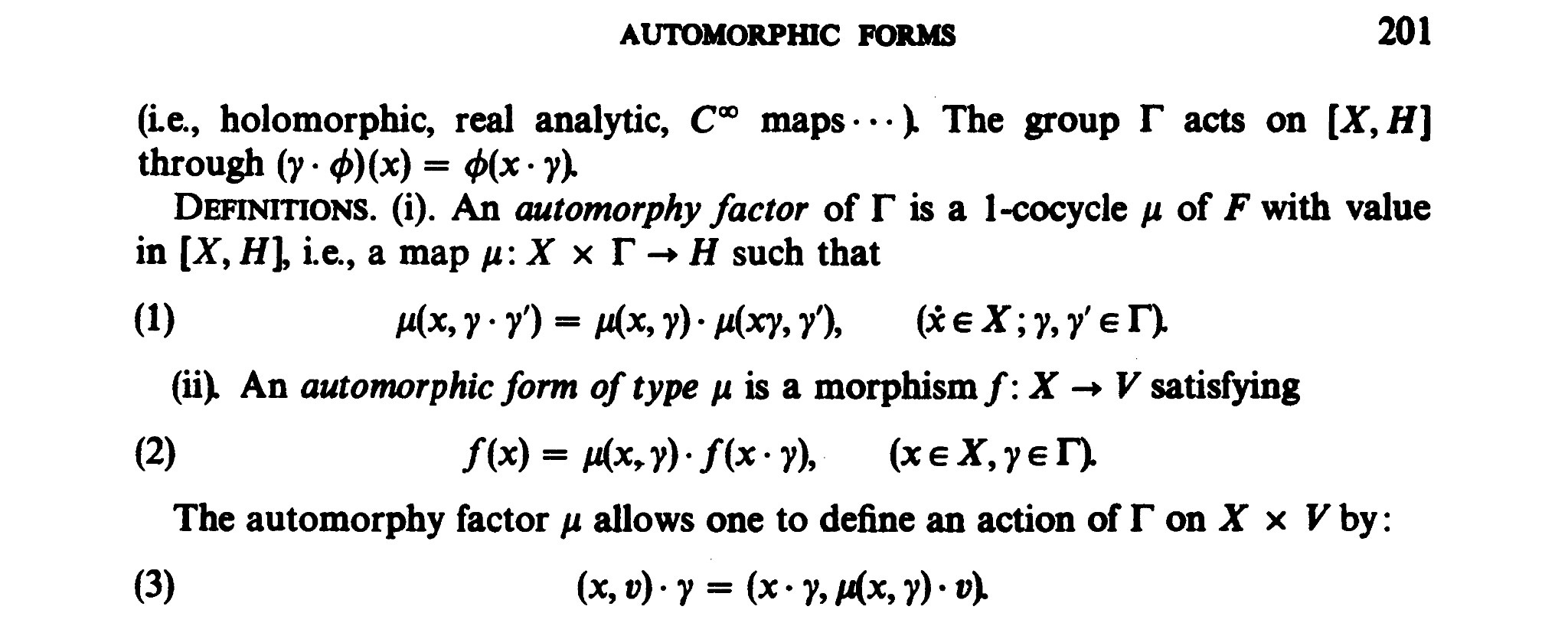My question is the about the equivalence of two definitions of automorphic forms on a semisimple Lie group.
The most common definition of automorphic forms on a semisimple Lie group $G$ with respect to a discrete subgroup $\Gamma$ is given by a smooth function $f:G\to \mathbb{C}$ with the following properties:
- left $\Gamma$-invariant,
- $K$-finite,
- $Z(\mathfrak{g})$-finite,
- slowly increasing.
Is this equivalent to the ones defined for $\operatorname{SL}(2,\mathbb{R})$ and $\operatorname{SL}(2,\mathbb{Z})$ where we have an automorphy factor $J(g,z)=cz+d$?
I also find a general definition with automorphy factors as follows. [Borel, Armand. "Introduction to automorphic forms." Proc. Symp. Pure Math. Vol. 9. No. 199210. 1966.]
I think given a classical automorphic form on $\operatorname {SL}(2,\mathbb{R})$, one could get a $\Gamma$-invariant form by multiplying an automorphy factor $j$. See page 283 of [Bump, Automorphic forms and representations]. So I guess the two definitions differs by such a automorphic factor $j:G/K\times G\to K_\mathbb{C}$.
